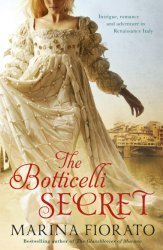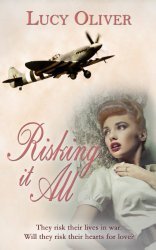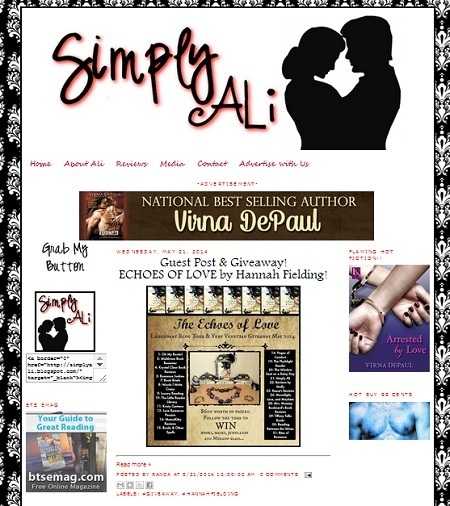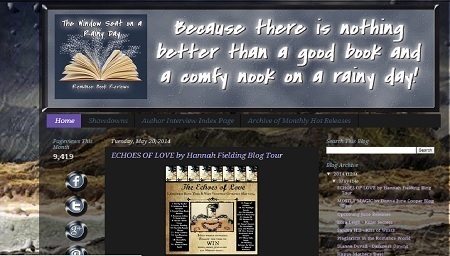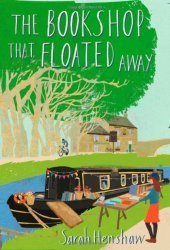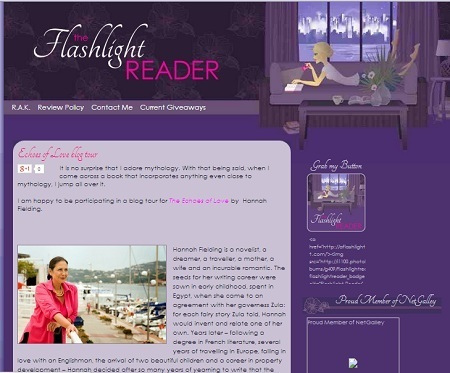Hannah Fielding's Blog, page 102
May 27, 2014
To sleep, perchance to dream…
 Recently, I’ve been thinking about dreams. To be a romantic is to be a dreamer. And so to write romance is to write of dreams. The dream is integral to the romance novel. No wonder, then, that a search for the word dream’ in my latest novel, The Echoes of Love, returns so many results, among them:
Recently, I’ve been thinking about dreams. To be a romantic is to be a dreamer. And so to write romance is to write of dreams. The dream is integral to the romance novel. No wonder, then, that a search for the word dream’ in my latest novel, The Echoes of Love, returns so many results, among them:
… like two people in a dream… trying to break into her daydreams… the echo of a dream long forgotten… eyes took on a dreamy look… filled with a dreamy sort of kindness… she could dream, and her dreams might actually come true… her heart full of dreams… had dreamed so often of those strong, masculine hands upon her… a tremulous, glittering, fragile dream from which she had no desire to awaken… a fevered dream… to allow himself to dream of love… gazing dreamily out at the peaceful scene… alone in a world made up of their dreams… an aura of wispy dream clouds…
Beyond the language of dreaming, the physical dream takes two important forms.
The sleeping dream allows the author to explore the subconscious world of characters. After the heroine, Venetia, is saved from a mugging by a handsome stranger, her sleep is disturbed thus:
Dreams came to her of a dark figure pursuing her through the streets of Venice, cloaked and masked, whispering her name. But each time she turned round, he had gone.
Later in the book, we learn that Paolo is similarly restless come night-time:
He would dream of her tonight, as he had dreamt of her every night since they had met. Those dreams were always tormented, painful – almost nightmares – from which he invariably woke up panting and in a sweat, with at best only a vague recollection of the details. But one thing remained clear: Venetia was always at the heart of them. Was she a danger to him somehow, is that what his subconscious was trying to tell him?
Both Venetia and Paolo are haunted, stalked by some understanding that eludes them. Later, for Venetia dreams of danger mingle with ‘the most erotic dreams she never knew her imagination could conjure’. Wherever she won’t allow herself to go with Paolo by day, she escapes there at night.
And what of the day? Then, my characters dream too. One might think these conscious dreams were easier to cope with; that with the awake, logical mind in force, the emotion of the sleeping dream dissipates. But in fact these daytime dreamings represent the very hearts of the characters – their yearnings for the future; ‘bright, shining dreams of everlasting love’ – and they are tremendously stirring. So much so that Paolo, whose heart has for so long been a closed book, is quite transformed by his visions. For years he has been a man without a past – and a future. And as he explains: ‘To live without a dream is a frightening prospect.’ It is love that gives him back the ability to dream – that ability so essential to really, truly living. ‘“Thanks to you,” he tells Venetia, “I dream. I hope and believe in love, and in all the wonderful things that the world has to offer.”’
I like to think that by the end of the book Venetia and Paolo are living the reality famously suggested by children’s writer Dr Seuss: ‘You know you’re in love when you can’t fall asleep because reality is finally better than your dreams.’ That’s the true happyeverafter!
Win with Moonlight, Lace and Mayhem on my ‘Legendary’ Blog Tour & Very Venetian Giveaway
Please visit http://moonlightlacemayhem.blogspot.co.uk/2014/05/blog-tour-echoes-of-love-by-hannah.html and comment for your chance to win, and to read about the romantic origins of jasmine.
May 25, 2014
Favourite artist: Botticelli
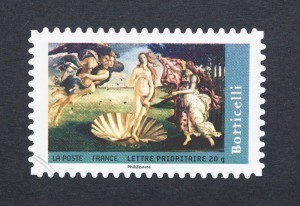 No doubt you’ve heard of Sandro Botticelli, the Italian Renaissance painter whose works include The Birth of Venus. Certainly, his artistic style has long been admired and a point of reference in creative circles; in The Echoes of Love, for example, I write of a beautiful landscape: ‘Botticelli must have set eyes on exactly this sort of vivid tapestry of spring’.
No doubt you’ve heard of Sandro Botticelli, the Italian Renaissance painter whose works include The Birth of Venus. Certainly, his artistic style has long been admired and a point of reference in creative circles; in The Echoes of Love, for example, I write of a beautiful landscape: ‘Botticelli must have set eyes on exactly this sort of vivid tapestry of spring’.
Today, for fun, I’m sharing ten interesting titbits of information about this great artist, some of which may just surprise you…
His real name was Alessandro di Mariano di VanniFilipepi. Botticelli comes from the word ‘botticello’ meaning ‘small wine cask’.
Initially, Botticelli trained as a goldsmith.
Botticelli was apprenticed to Fra Filippo Lippi (the subject of Robert Browning’s poem ‘Fra Lippo Lippi’ containing such wonderful lines as ‘Paint the soul, never mind the legs and arms!’).
By the age of 15 Botticelli had his own studio – an artist in his own right.
In 1481, he left Florence for the only time in his life, at the request of the Pope – to paint frescos in the Sistine Chapel.
In 1504 he was one of a committee of men charged with deciding where to situate Michelangelo’s David.
Botticelli began to fall from favour for two reasons: his association with the Florentine monk Savonarola, who advocating burning ‘ungodly’ books and artworks; and his inability to keep pace with the huge changes taking place in the art world, as Italians fell in love with the works of new artists like Leonardo da Vinci.
Following his death, Botticelli was not well remembered for his work – upstaged by the likes of Michelangelo and Raphael. It wasn’t until the late 19th century that his art became popular once more.
In the first 20 years of the 20th century, Botticelli was the focus of most art books published.
Supposedly, Botticelli harboured a secret love for married noblewoman Simonetta Vespucci (see my guest post on this at Simply Ali), but historians have speculated that he was homosexual.
If, like me, you love both art history and romance, allow me to recommend the wonderful novel The Botticelli Secret by Marina Fiorato. As in the wonderfully descriptive, Venetian-set The Glassblower of Murano (see my review), this is a twisting, colourful story full of intrigue and passion:
Florence looks like gold and smells like sulphur . . .In the colourful world of fifteenth-century Italy, Luciana Vetra is young and beautiful, a part-time model and full-time whore. When she is asked to pose as the goddess Flora for Sandro Botticelli’s painting La Primavera, she is willing to oblige – until the artist abruptly sends her away without payment. Affronted, she steals an unfinished version of the painting – only to find that someone is ready to kill her to get it back.
As friends and associates are murdered around her, Luciana turns to the one man who has never tried to exploit her beauty, Brother Guido della Torre, a novice at the monastery of Santa Croce. Fleeing Florence together, Luciana and Guido race through the nine great cities of Renaissance Italy, desperately trying to decode the painting’s secrets before their enemies stop them.
May 23, 2014
Book review: Risking It All by Lucy Oliver
From the blurb:
Beneath bomb-filled skies, Head Radio Operator Lynne Cecil takes the safety of her RAF pilots seriously. They’re England’s last defense against the Luftwaffe. But too many pilots die on her watch. The top brass harass her for answers, but her team is giving their all.
Devastated by the death of his brother, Spitfire ace Billy Jenkins accepts a secret assignment to investigate the high rate of deaths. But the person who seems at fault is his old flame, Lynne. Torn between duty and love, Billy must discover if the woman he still adores is responsible for the loss of his fellow flyers.
Lynne can’t afford the distraction of falling for a fighter pilot like Billy at this dangerous time. But every flight could be Billy’s last. Will she settle for one night of passion or risk losing him forever?
As soon as I saw a new book by Lucy Oliver up for review, I knew I must request it, because I so enjoyed her earlier books. I knew I would love the book, and I was right.
In terms of the romantic novella, this is perfection. It has everything you could want:
Thehistorical setting is vivid and realistic. I was fascinated by the detail on the air defence, and especially the role of the head radio operator – I had no idea of the responsibility they shouldered. The darkness at the centre of the story (too many pilots die on Lynne’s watch) is compelling, and it made me wonder how true to life this part of the story is. I’ll say no more for fear of spoiling this plot element!
The story is poignant and compelling with mystery and plenty of passion and drama. Plenty! The backdrop of the war really heightens emotions and squeezes the time frame for a love affair. In a time when you knew every moment was so very precious, there was no time to mess about in love – and that feeling of urgency and intensity, mingled with fear of loss, permeates the story.
The author shapes characters whom you can’t help but feel for and admire. Billy is sublimely easy to fall in love with, given his heroic job as fighter pilot – but there are such depths to this man, who battles grief over the loss of friends and the difficult job of investigating the death rate connected to Lynne’s team. But for me, the stand-out character is Lynne herself. How wonderful to have such a capable and strong heroine for the era! And we can well understand both her reticence at falling in love in such times, and with such a man, and also the strength of her passion when she finally sets it free.
Finally, the writing style is lovely. So easy to read, transporting you to another time – evocative, colourful, beautiful.
I was utterly gripped and caught up in the story world, so much that so that I read the novella in one sitting (fuelled by three coffees).
If you want to be moved and to be swept away in romance, this book is a must-read.
Heavenly. I can’t wait for Lucy’s next book…
I reviewed this book for the Romantic Historical Fiction Lovers .
Risking It All is available now from Amazon; click on the book cover below to visit the store.
May 22, 2014
Writing maps to guide you through the writing process
I confess, I have a real passion for book- and writing-related gifts. If I’m not giving the gift of a book itself, a gift that celebrates the love of the written book is the next best thing. So I quite often find myself on literary gift websites, looking for some original, quirky gift for a friend. Imagine my delight this week when I came across a range of maps for writers!
The maps are designed to offer ‘inspiration in your pocket wherever you go’: ‘to inspire stories, spice up your writing routine, expand your work, develop work-in progress, and make sure you have writerly fun in ways that’ll surprise you’.There are twelve maps for different spaces:
City of Inspiration: Writing Prompts for Writing in Cafes, Parks, Galleries and by Water
Writing the Love: Writing Prompts for Lovers in Galleries, Parks and Cafes
Writing People: A Writing Map for Crowded Places
Write Around the House: Writing Prompts to Explore the Rooms We Inhabit
The Character Map: Writing Prompts to Explore Characters in Fiction & Memoir
My Writing Life: Charting Your Life as a Writer
Writing Art: Writing in Galleries and Museums
The Cafe Writing Map: Writing Prompts for Cafes, Bars, Bistros, and Pubs
Writing Things: Writing About Objects and the Things We Carry
Write by the Sea: Writing about the Seaside and the Sea in Our Lives
The Voice and Point of View Writing Map
Write Up Your Street: A Neighbourhood Writing Map
I’m a writer who’s very much inspired by settings, so I find the concept very appealing. I especially love the art gallery one.
The map collection is growing – plus Writing Maps runs regular competitions for writers. So the website is well worth a visit: www.writingmaps.com.
May 20, 2014
Win with Simply Ali on my ‘Legendary’ Blog Tour & Very Venetian Giveaway
Please visit http://www.simplyali.com/2014/05/guest-post-giveaway-echoes-of-love-by.html and comment for your chance to win, and to read about Simonetta: Botticelli’s Venus.
Win with The Window Seat on a Rainy Day on my ‘Legendary’ Blog Tour & Very Venetian Giveaway
Please visit http://www.thewindowseat13.com/2014/05/echoes-of-love-by-hannah-fielding-blog.html and comment for your chance to win, and to read about the legend of Ca Dario.
Bookshops of the future: Exclusive boutiques?
 Bookshops, sadly, are in decline. According to an article published in the Guardian in February: ‘The number of independent bookshops gracing British high streets has fallen below 1,000 – a third fewer than nine years ago’ and ‘more than 500 independent outlets have shut since 2005’.Beyond the UK, the story is the same: competition from big chains, supermarkets and Amazon, the shift away from high-street shopping, and the rise in popularity of ebooks have put enormous pressure on bookshops.
Bookshops, sadly, are in decline. According to an article published in the Guardian in February: ‘The number of independent bookshops gracing British high streets has fallen below 1,000 – a third fewer than nine years ago’ and ‘more than 500 independent outlets have shut since 2005’.Beyond the UK, the story is the same: competition from big chains, supermarkets and Amazon, the shift away from high-street shopping, and the rise in popularity of ebooks have put enormous pressure on bookshops.
Commentators in the publishing industry who are watching the transformation with worried eyes have speculated on the future of the bookstore, and many have suggested that it will become an exclusive destination for those ‘old-fashioned’ types who love what the rest of the world deems to be something of a curiosity: the printed book. They envision books with hefty price tags housed in beautiful emporiums dedicated to bibliophiles.
I must say I would be deeply saddened to see the printed book become rare, but I would be delighted to see it so revered. Book boutiques: let us embrace them now!
Of course, some courageous and visionary book store owners are already working hard to create a ‘boutique’ feel. Take Mr B’s Emporium of Reading Delights in Bath, Somerset. Twice winner of Independent Bookshop of the Year, it’s a haven for book lovers; just take a look at the website’s description of the store:
Cream shelves packed with books span across three floors of a pretty Georgian building with lots of added quirky features such as a converted claw-foot bath book display, a wall papered with a Tintin comic, toilets papered in book reviews, a rentable reading booth (complete with leather chair and biscuit barrel) and our sumptuous “Bibliotherapy Room” with comfy armchairs, a fireplace, rotating thematic book displays and free tea and coffee available for customers.
Heavenly! Mr B’s also houses all sorts of events, and has live music supplied by The Bookshop Band. It’s enough to make one want to move to Bath…
For those don’t have a fabulous local bookstore, why not wait for one to come to you? If you’re lucky enough to be near an English or Welsh waterway, you may find the Book Barge moored nearby. Brainchild of journalist Sarah Henshaw, this floating ‘boatique’ has captured imaginations for its quirkiness and innovation. In fact, Sarah has just published a book detailing a summer she spent canalling with her Book Barge. It’s on my ‘to-read’ list!
Win with The Flashlight Reader on my ‘Legendary’ Blog Tour & Very Venetian Giveaway
Please visit http://www.theflashlightreader.com/2014/05/echoes-of-love-blog-tour.html and comment for your chance to win, and to read about the origin of Burano lace.
May 19, 2014
Venice Preserv’d
Ah, Venice: setting of my latest novel, The Echoes of Love. Going to Venice and experiencing its beautiful architecture and inspiring culture? Wonderful – but out of reach for many due to the constraints of distance and expense. Going to Venice and experiencing first-hand its history, its days as the Serenissima Republic? Wonderful – but out of reach for all, surely, without the invention of a time machine. Not quite, actually: this month one can get intimately acquainted with historic Venice. Not in the Italian city itself, though, but in London…
… what type of place is this surrounded by water and time – Venice preserv’d – we are in a place where the old preserve so the young must stand up and take what is rightfully theirs – the future – the time could be then or it could be now – morally corrupt and under the threat of flood – what’s new in that…
So says a character in the Prologue to the play Venice Preserv’d, written in the 1680s by Restoration playwright Thomas Otway. The play is a tragedy based around a plot against the Senate of Venice. Here’s a brief synopsis as published by the Londonist:
Jaffier wants to rise against Priuli, one of Venice’s senators, who is against our hero’s marriage to his daughter Belvidera. Jaffier soon finds an ally in Pierre, who is one of his best friends and a plotter against the Serenissima Republic’s Senate.
The action plan is quickly sealed: get rid of the Senate and start a new Venetian era of justice and equality. But Jaffier finds obstacles in his own path, divided between the love he feels for Belvidera and his promise of honour. Soaked with idealism, the conspirators want to preserve Venice from a future of corruption and decadence: it’s the never-ending battle between the new generation and the old system. Will they manage to serve out their idealistic cause?
In its day, the play was hugely popular. In fact, for the next 100 years at least it was revered as one of the great tragedies of the English stage (remember, Otway was writing in the wake of Shakespeare). But at some point it fell from favour, and today it’s been all but forgotten, other than by actors and English literature classicists. Change is afoot, however, with a new, modern-edged production.
In a staging that the company calls ‘classic stagecraft meets site responsive event theatre’, The Spectators’ Guild has resurrected this once-loved work. Audience membersmeet the Doge at the prow of the Cutty Sarkand follow performers ina carnival parade through the streets of maritime Greenwich to the Paynes and Borthwick Wharf, where the story unfolds under the Italianate arches. The Guild explains:
By transforming the heart of old maritime Greenwich into “The Most Serene Republic of Venice” the audience are invited into a fully realised immersive world to join in the carnival before uncovering a tale of love, corruption, friendship, rebellion and betrayal.
To get a feel for the event, take a look at this video on the making of this production:
What comes through so clearly in this short film is the marriage of London and Venice. You may wonder why a play set in Venice works so well staged in London… In fact, Otway intended his seventeenth-century audiences to draw parallels between the story and that of London of the time. The great plot to overthrow the Senate echoes the Gunpowder Plot of 1605, which British people remember to this day on Guy Fawkes’ (Bonfire) Night.
If you’re in the capital between now and the 7th June and would like a brief interlude from your London time to escape to Venice, visit www.venicepreservd.co.uk for details and tickets.



